Animal Skull Drawing Step By Step
The human skull carries a lot of meaning and symbolism that can elevate the depth of your artwork, allowing the viewer their own interpretation of your expression. Not only this, but the skull is also the foundation for being able to draw a human head. If you struggled with this in the past, then this tutorial will instruct you on human skull drawing with realistic detail to aid you on your way to greatness. These basics can be played around with and can be meshed in with your choice of art style.
Table of Content
- 1 Reasons for Skull Drawing
- 1.1 Improvement in Your Drawing Skills
- 1.2 Symbolism
- 2 A Note on Proportions
- 3 Instructions on How to Draw a Skull
- 3.1 Materials for Human Skull Drawing
- 3.2 Step 1: Your Skull Outline
- 3.3 Step 2: Getting the Right Proportions
- 3.4 Step 3: The Nose and Eyes
- 3.5 Step 4: Time for the Teeth
- 3.6 Step 5: Skull Outline, Jawline, and Structure
- 3.7 Step 6: Detailing Your Skull Sketch
- 3.8 Step 7: Adding Dimension: Shading Your Human Skull Drawing
- 4 How to Draw a Skull from an Angled View
- 5 Top Tips for Drawing a Skull
- 6 Frequently Asked Questions
- 6.1 How Difficult Is Drawing a Skull?
- 6.2 What Do Skull Drawings Symbolize in Art?
Reasons for Skull Drawing
For many reasons, human skull drawings and skull sketches have been the muse for many artists. It might seem strange to you, but the skull holds much symbolism and attracts those that least expect it. It can teach you a lot about shading, where you can create contours and contrast without drawing actual lines. By the time you have completed your work, you will deeply appreciate the subject matter for the amount of time your eyes have looked over its surface for any missing details.
Improvement in Your Drawing Skills
The human skull is hidden underneath our muscle tissue and our skin. This is what gives each person's head its shape and depth. By studying and rendering what you see from the bone, you will receive an inside look into the similarities and differences of each human head. You will notice how different our faces look when they are not covered in skin, and the act of drawing the skull can feel almost primal. Practicing how to draw the human skull will greatly increase your skills in art and drawing.
Cheekbones are a complicated topic and the shading of someone's gaunt face is not any easier. A skull outline might be the answer to your tribulations. Wasting your art resources is no longer going to be a problem because you will be more than satisfied with the skill you have learned by practicing skull drawing.
Symbolism
The human skull is not always symbolized to represent something morbid. On the contrary, it can represent the appreciation of life. It can be a representation of humans being vain, as we see in Charles Allan Gilbert's depiction of a woman gazing at her reflection in the mirror, where the image and reflection is actually a skull. It could also mean transformation, or transitioning from life into the next realm, whatever it may be. Mexicans favor this belief in their holiday Dias de Los Muertos, where everyone joyously celebrates and remembers the dead. Skull drawings are, however, more typically used to represent death – humans are mortal after all.
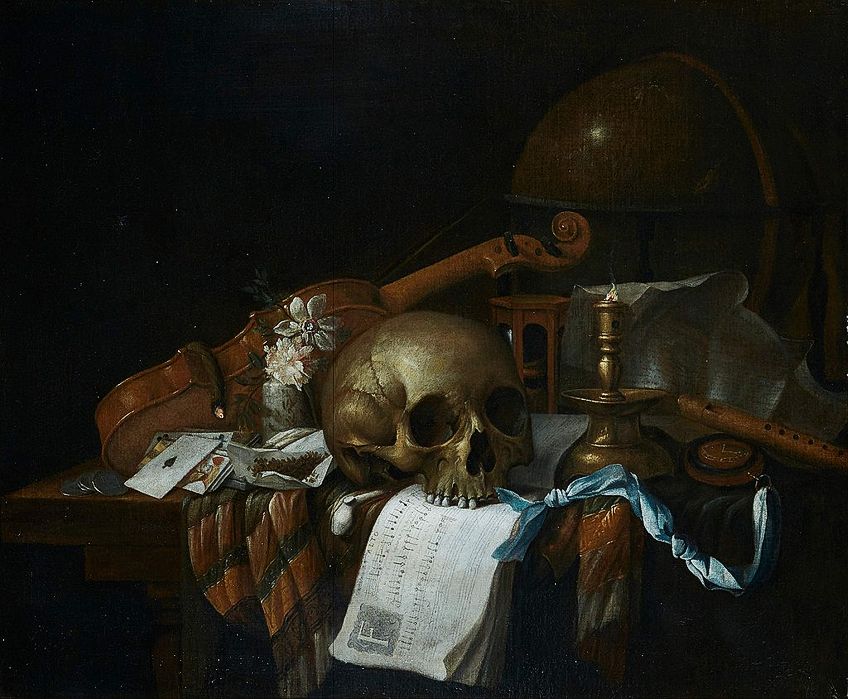 Vanitas still life with a skull, sheet music, violin, globe, candle, hourglass and playing cards, all on a draped table(1662) by Cornelis Norbertus Gijsbrechts;Cornelis Norbertus Gijsbrechts, Public domain, via Wikimedia Commons
Vanitas still life with a skull, sheet music, violin, globe, candle, hourglass and playing cards, all on a draped table(1662) by Cornelis Norbertus Gijsbrechts;Cornelis Norbertus Gijsbrechts, Public domain, via Wikimedia Commons
The 17th century saw humanity and the art world through the Vanitas period. Vanitas means "vain" in Latin. It was based on the appreciation for still-art, inanimate objects staged in a certain way. It usually carried symbolism chosen by the artist. It was most popular in the Netherlands where the artists began to question life, death, and mortality. Most of these paintings and drawings had a depiction of a skull somewhere either in plain sight, or hidden, leaving a surprise for the eager eyes who spotted it.
A Note on Proportions
We are all quite unique in personality and physique. The contours of our faces and our heads will not be the same as the person to your right or your left. Your facial expressions are defined by your personality and no one will be able to repeat the same. While this may be astoundingly true, there will always be the basics to the shape of a human head.
Learning to draw a skull outline will help you with your accuracy. You can add someone's personality once you have their silhouette. In order to begin a skull sketch, you must first take a good, long look at a skull's face from the front. You might notice that it has the shape of an egg pointed downwards – rounded at the top and narrow at the bottom. If you plan on drawing an eye inside the skull socket, then it is a good idea to remember that muscles and flesh take up more space. Basically, your eye will seem much smaller than the actual socket. It is important to take note of the following proportions:
- The length of one eye is the same length as the distance between your eyes.
- The length of both of your eyes is just about your face's width.
- If you want accurate proportions, divide the face you are drawing into four sections by drawing a vertical line and crossing it with a horizontal line, both through the middle.
- The width of one of your eyes is the same distance between the bottom of your nose and either of your eyes.
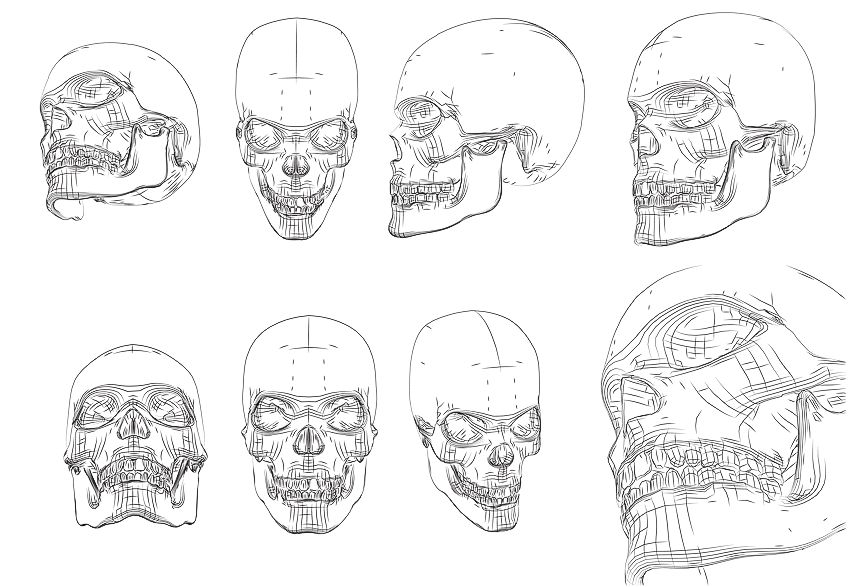
Instructions on How to Draw a Skull
Proportions are now in the bag! Your artwork when drawing human faces will no longer look like a depiction of an alien. The next thing to work on is drawing the actual skull. Below, we will provide a list of recommended materials as a well as step-by-step instructions on how to draw a skull realistically.
Materials for Human Skull Drawing
Whether you are working with a tablet for graphics drawing or if you prefer the old-school style of pencil on paper, then these instructions will get you through it all. Your art supplies might need re-stocking, or else you can haul them out of your cupboard. So, what materials or tools do you need for skull drawing?
- Pencils: We recommend the Prismacolor Premier Graphite Pencils.
- Paper, board, or canvas: We recommend the Strathmore 300 Series Drawing Pad.
- Eraser for mistakes: We recommend the Pen Eraser Set with Kneaded Erasers, Gum Erasers, and Pencil Erasers.
- Tablet (optional): We recommend the XOPPOX Graphics Drawing Tablet
Step 1: Your Skull Outline
First, you need to draw the shape of an oval – as we have mentioned, the human head is similar to that of an egg shape pointed downwards. Find the center of this. This step requires very faint lines so that they are not visible at the end.
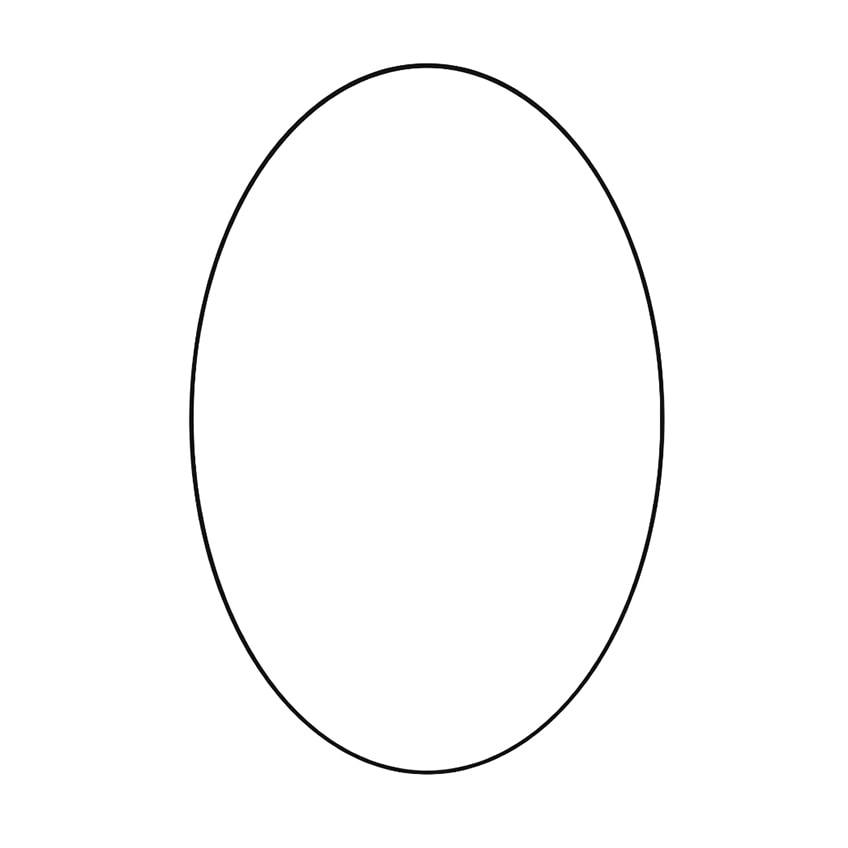
Step 2: Getting the Right Proportions
In order for you to put the eyes in the correct place without it seeming off-balance, you need to divide the oval up.
- Do this by drawing a circle within the top half of the oval. The bottom half must be left with the space for the jaw, chin, and teeth.
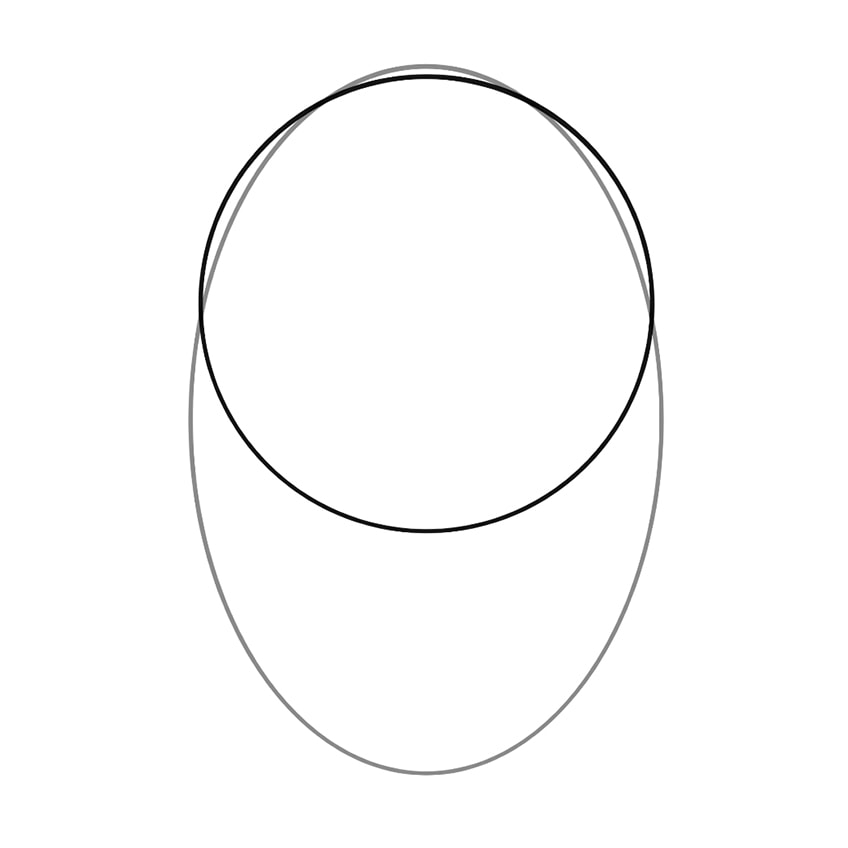
- Next, as we have mentioned above, draw a line going vertically right through the middle of the oval shape. This will help us keep the nose in the center.
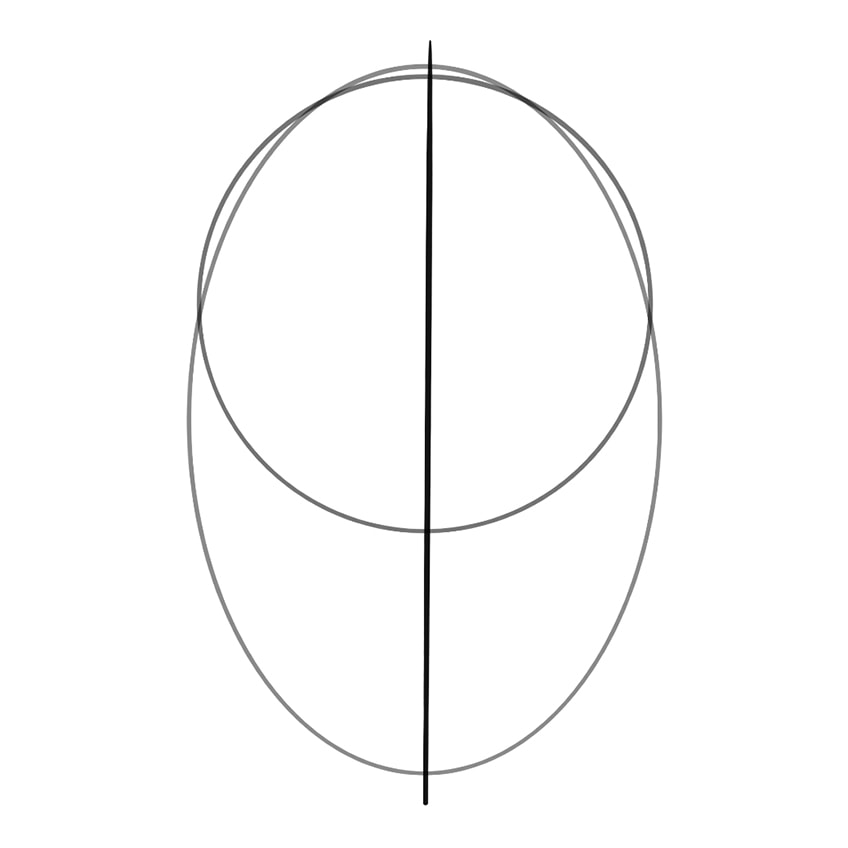
- Next, as you might have guessed, is to draw a line going horizontally through the middle of the circle shape, not the oval. This is magical assistance when it comes to symmetrical eye placement.
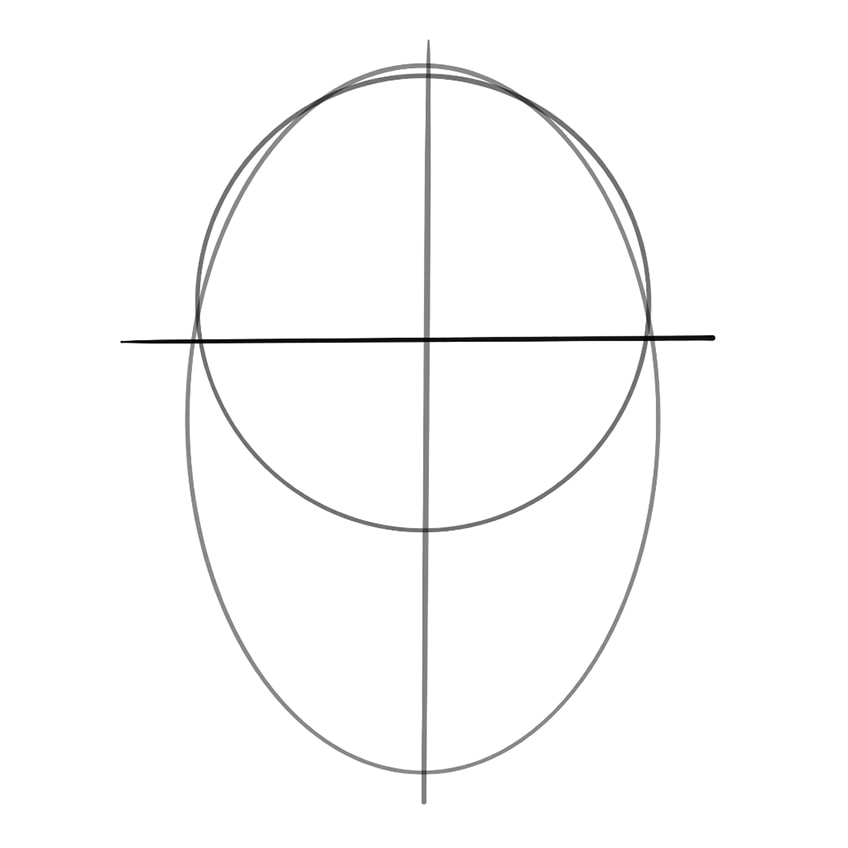
- Following that, a second horizontal line is needed, but this time through the oval you first drew. This creates the four sections we mentioned earlier that help exponentially with proportioning someone's face and adding symmetry to their cheekbones. This can be helpful when drawing elf-like faces.
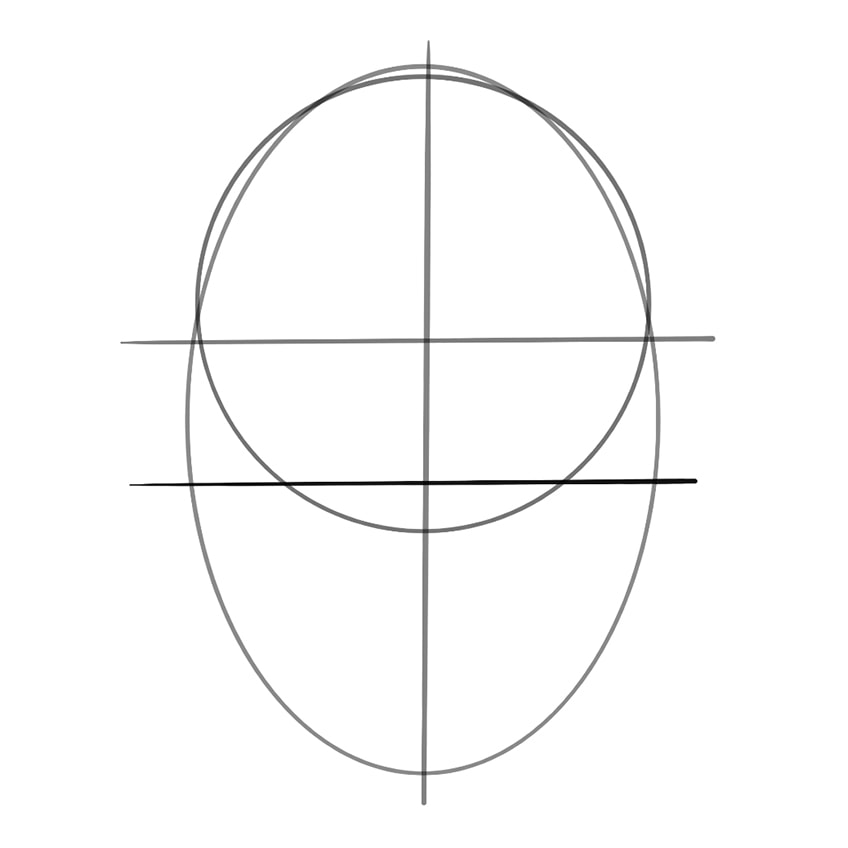
- Yet another horizontal line must be drawn at the bottom section of the oval. This is for drawing accurate mouths that are sitting in the right place. The top lip will be placed above the bottom horizontal line and the bottom lip below it.
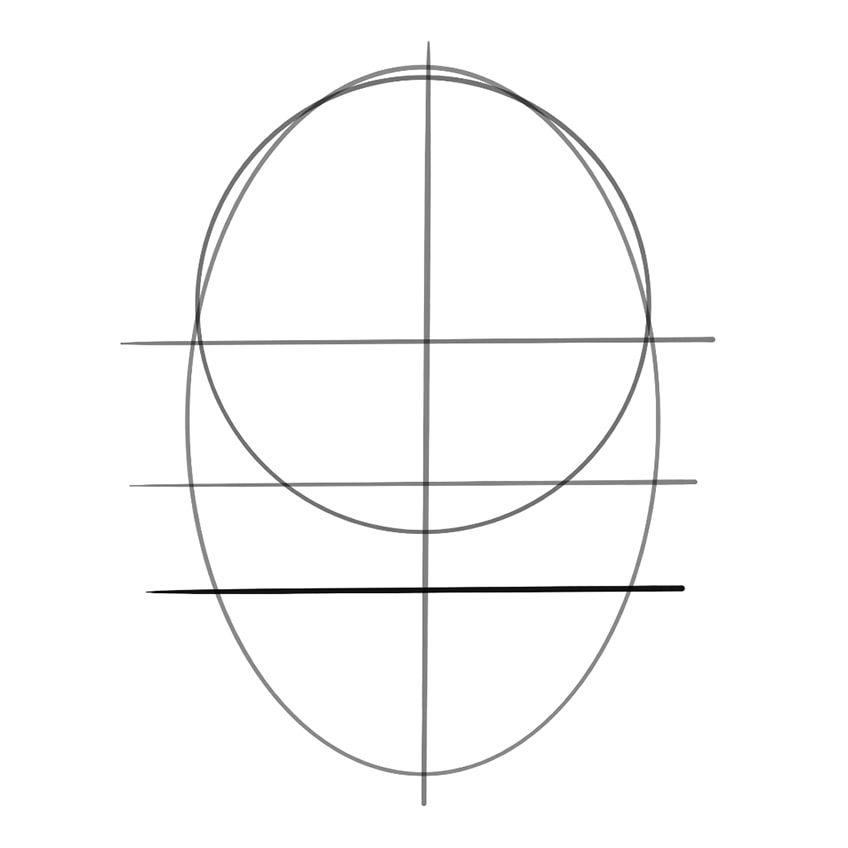
Step 3: The Nose and Eyes
Where would we be without our eyes and nose? Nobody knows! Our next adventure in the art of skull drawing is the addition of your nose and eyes.
- For this, we must focus on the very first horizontal line going through the top third of the oval shape. For each side (both left and right), you must draw a circle using the horizontal line as the divider. Make sure that half the circle is at the top and the other half is below the line.
- When drawing the nose, we will focus on the vertical line dividing the oval in half. Draw another oval shape using the line as the middle divider, ensuring that the bottom of the oval only just overlaps the middle horizontal line.
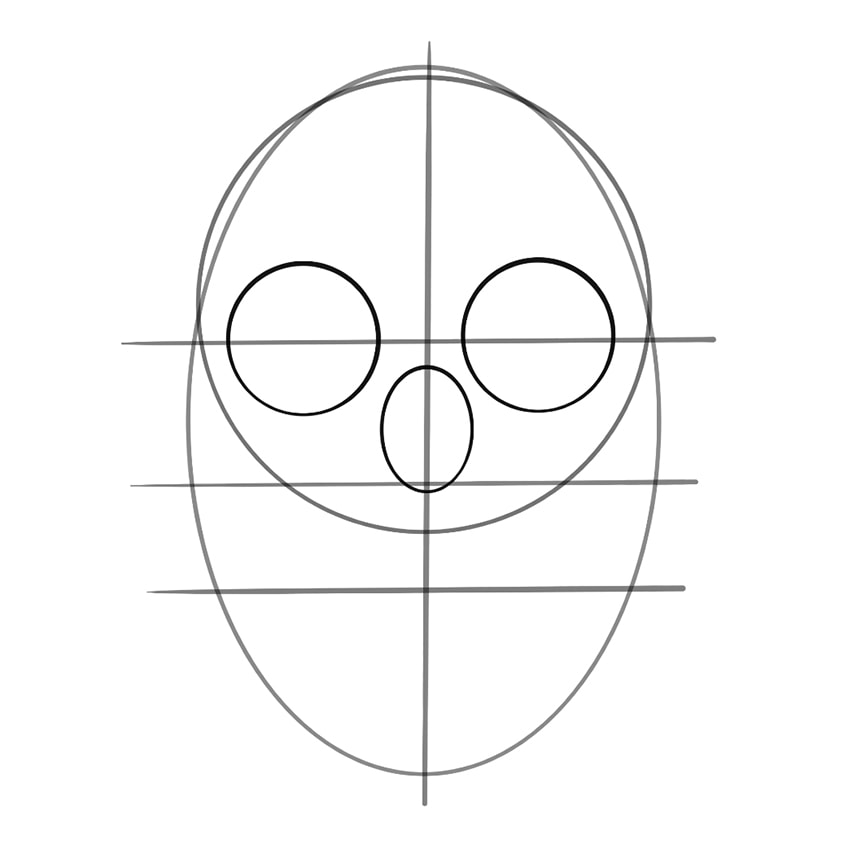
Step 4: Time for the Teeth
Always remember to make use of the horizontal and vertical lines – they are your symmetry guidelines!
- Make use of the lower horizontal line for the teeth, as well as the vertical one. To get teeth that look like they had braces at some point in their life, draw one bigger circle on one side of the vertical line and the same on the other side. Work your way to each end by drawing smaller and smaller circles on either side, stopping in the middle.

Step 5: Skull Outline, Jawline, and Structure
If you look at what you have drawn now, it might look to someone without an artistic eye more like a kindergarten student's attempt at drawing a snowman. This is not the end of the world, as this is what this next step will improve upon. By adding contour lines, you will start to see the image of the skull and not just the oval shape.
- It is now time to forgo the lighter lines you used earlier for the symmetry shapes. Using a darker pencil and firmer hand, draw the outline of the skull's shape. This is also known as the outer shape of the skull's silhouette.
- Using the top of where the teeth circles end as the middle of your cheeks, draw the lines that will form the cheeks symmetrically.
- Now, to get the jawline, turn the bottom of the oval (the pointed part) into a more squared shape. Be sure to add some bumps over the line so that it looks more realistic, just like a human jaw and skull.
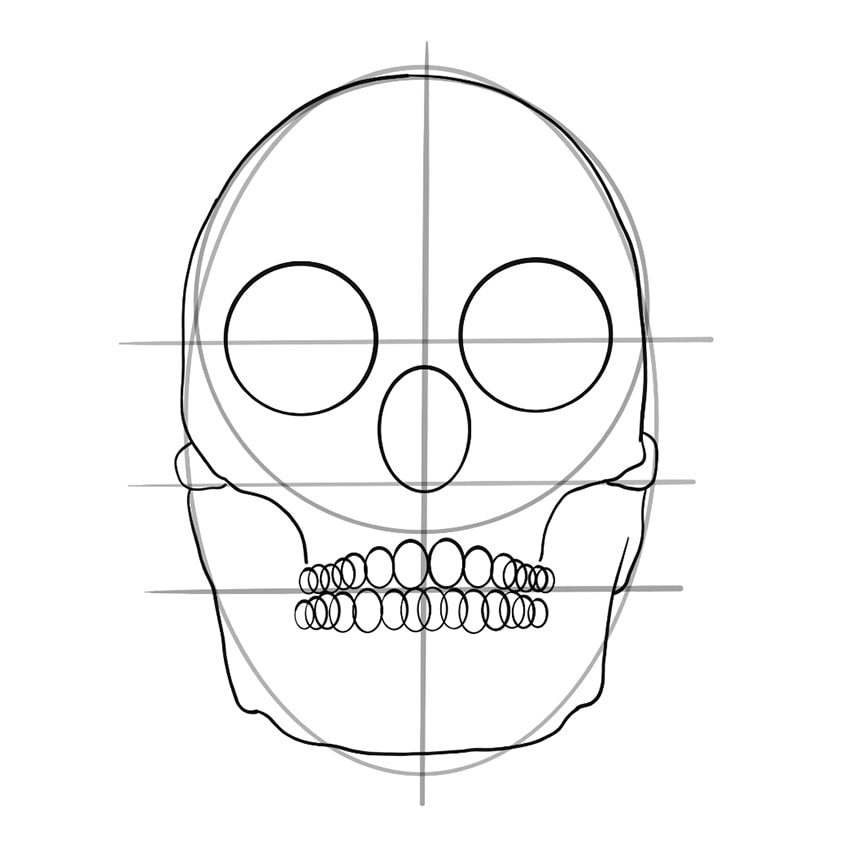
Adding all these circles may seem a tedious task and your impatience might want to have you diving right into the jawline with all its bumps and grooves. Unless you have an extreme eye for symmetry, this is the advisable route to start drawing skulls – do not skip these steps because you might end up with a skull drawing that looks like it was made out of wax and melted ever so slightly!
Symmetry is a key factor when it comes to skull drawing.
Step 6: Detailing Your Skull Sketch
Whip out yet another and even darker pencil for this next step. This is where things become exciting and a little more tricky. Some say that beauty is in the details, and in this case, it is true.
- In order to turn the circles or ovals into teeth that look like teeth, take your pencil and draw over each of the circles to give them some detail.
- The eye sockets will have jagged, bent, or curved lines instead of perfectly rounded shapes. This is an important step if you are trying to draw a realistic skull.
- In order to draw the eyes, nose, and cheeks in more detail, you can add in some shading with darker colors. This makes them more distinct against the outline of the skull.
- If the skull is an old skull, it might have a few indents, cracks, or scratches over the surface of it. This is a great detail to add for realism.
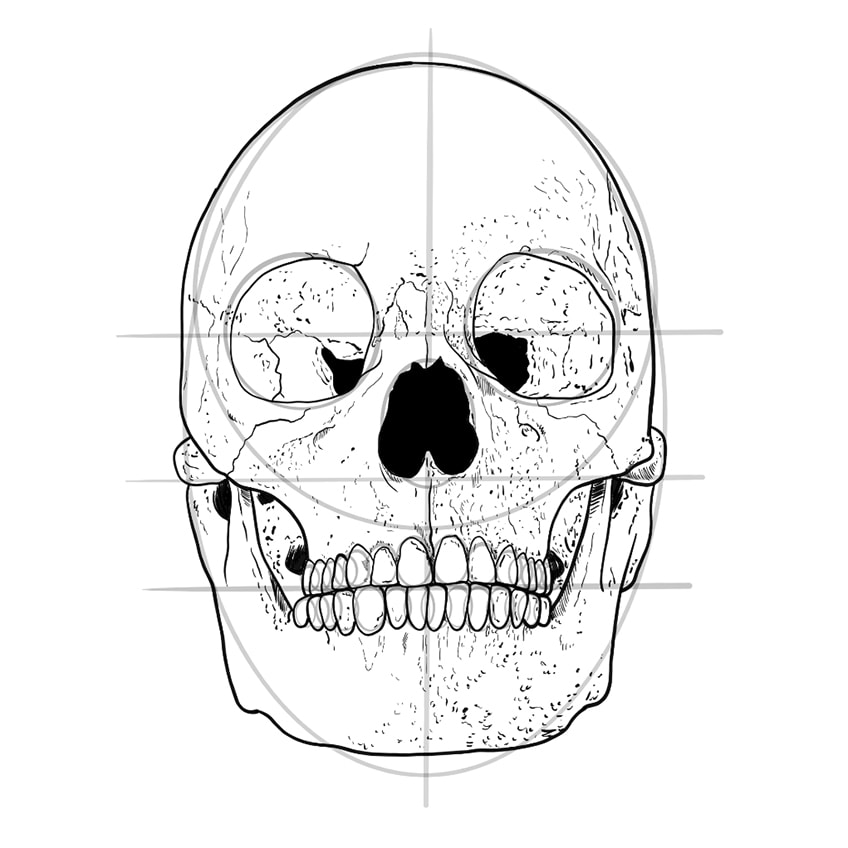
Step 7: Adding Dimension: Shading Your Human Skull Drawing
Some artists have mastered the skill of dimension and the detail of shading. So much so that it looks like a 3D image has been printed onto paper or canvas. This next step is vital for bringing life into your drawing – ironic is it not? In order to get this right, you must make sure that you have a graphite pencil set with all the different light and dark pencils for shadows and highlights, respectively.
- Start shading with a lighter pencil and try not to press down too firmly with it. You can always go back to your pencil set and whip out a darker one if the part you are shading requires it. This also helps to prevent your hand from smudging your hard work and ruining the final result, as darker pencils are highly prone to smudging.
- If you are drawing with a pencil in hand, a cotton swab is useful for bringing out the shading.
- If a tablet for graphics drawing is your game, then you can utilize the soft brush tool to emphasize the shading as well.
- A human skull is hollow in shape, which means that the inside of the hollow skull will be very dark, almost black, in color. This will add a lot of definition as well as the hollow effect.
- Light will always come from a certain angle. To make your skull look realistic, it is advisable to have a focal point from where the light shines onto the skull. Of course, the side where the light supposedly hits it will be lighter than the other side. Make sure that you add more shading on the side where the light does not shine.
- Once all the definition has been added to your skull, you can finish off by erasing any of the earlier foundation lines you drew that might still be visible. This might be especially necessary for outlining contour lines.
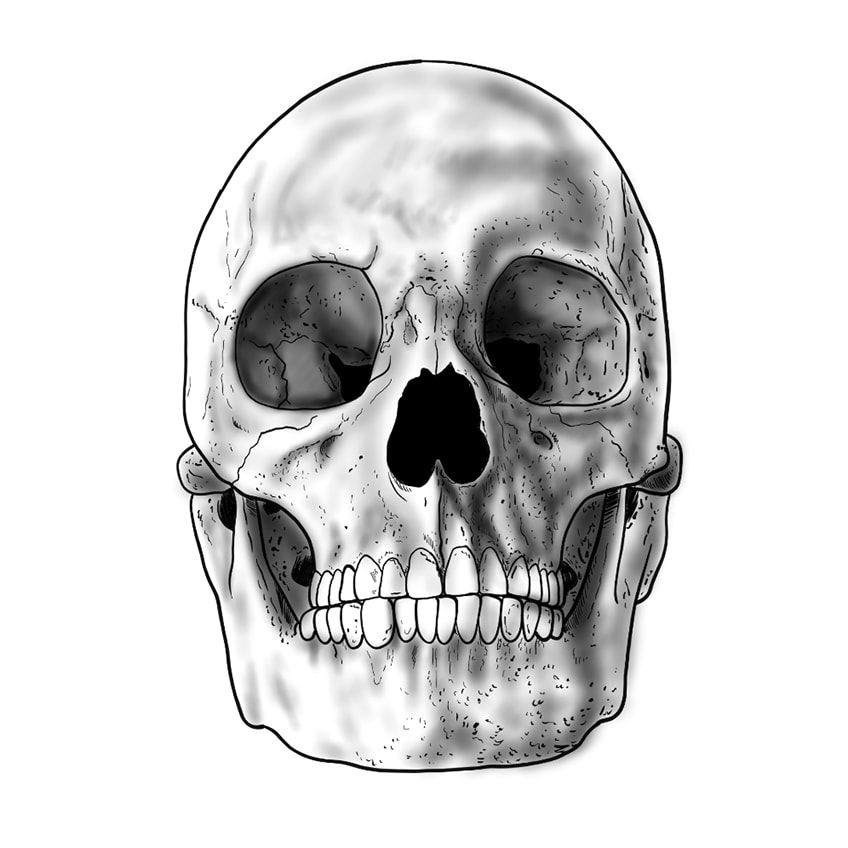
How to Draw a Skull from an Angled View
The entirety of the instructions above is based upon a head-on view of a skull. Sometimes life is not so straightforward and you might have to draw the skull from a profile perspective instead. Fear not! You will not have to relearn everything we just taught you, because the basic foundation lines remain the same. The only addition is that of the foreshortening technique.
What is foreshortening, you say? Well, it is the ability to add depth or dimension to your artwork. Without it, your piece will lack realism. Aspects of the human skull in subjects that are seemingly behind the skull, the opposing profile, will need to be made smaller and filled with much darker shading due to the light shining on the profile facing you. The aspects that seem to be at the front of the drawing, the side of the profile facing the viewer, must be larger and have less shading so that it seems as though the light is shining on it.
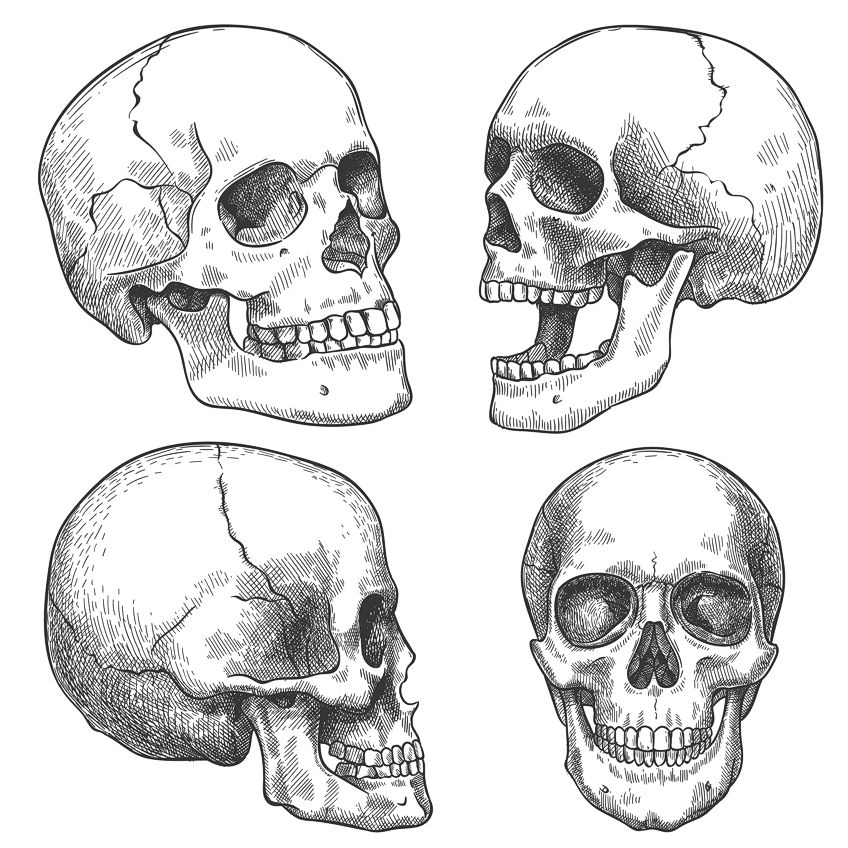
Top Tips for Drawing a Skull
- Cut a picture of a skull from a magazine or download one online so that you have something to look at and reference. This helps if you are not as accustomed to the curves and shadows or a skull, and can be applied to any subject matter.
- Planning ahead is the ultimate step to a successful and accurate drawing of a skull, no matter the species. Make sure that you draw the shapes beforehand so that your symmetry is on point.
- In order to practice the shading that shows the angle from which the light is shining on the skull, take any old inanimate object that has a similar shape and practice the shading – note how the light part is where the light hits the object and the darker part is behind that.
- The teeth and the eye sockets of a skull are undoubtedly the highlights of all the features. What makes the eye sockets even more realistic is if you show cracks coming from them as a jagged fine line going round in a circular or rounded motion and ending near the jaw.
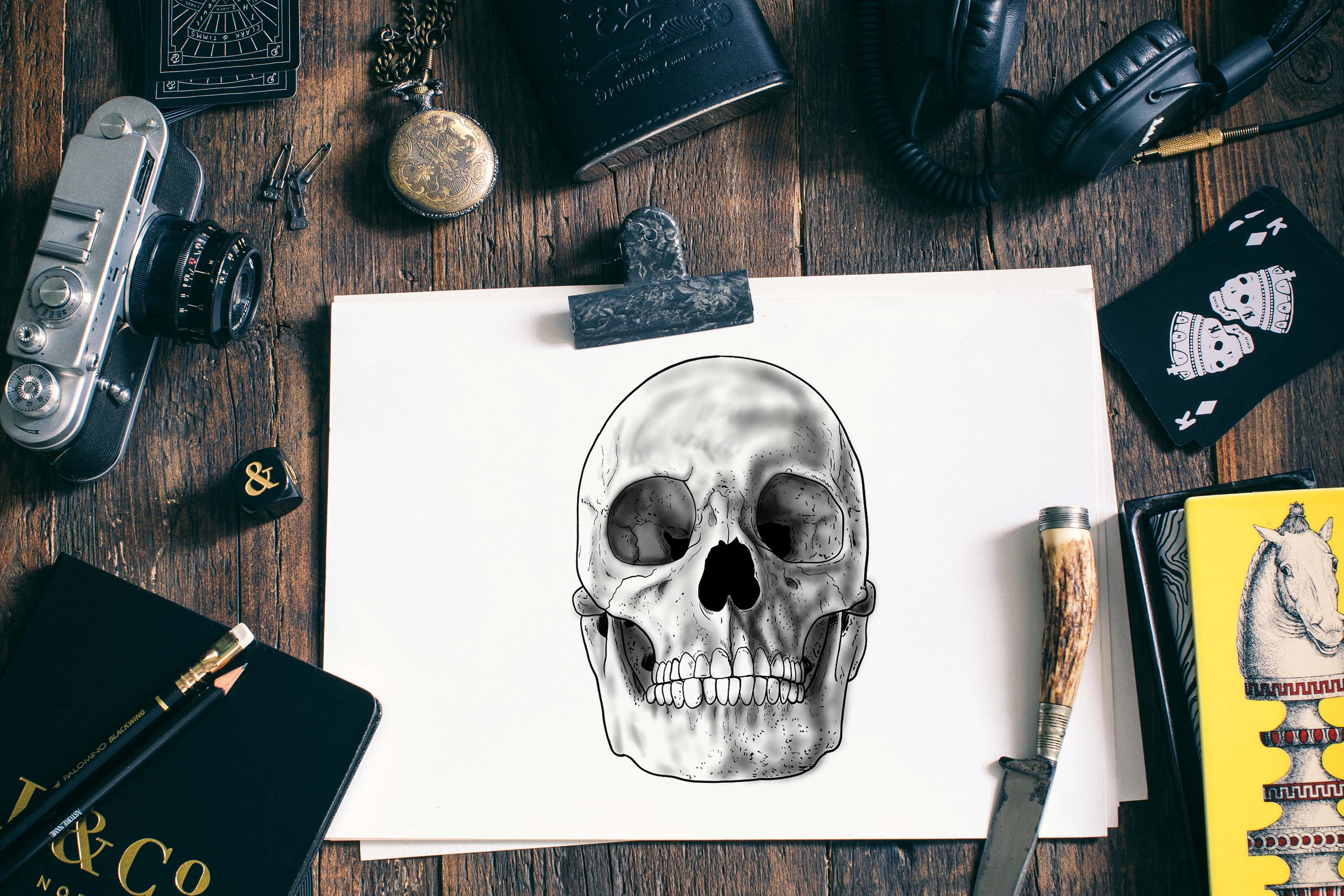
Frequently Asked Questions
How Difficult Is Drawing a Skull?
It is undeniable that learning how to draw a skull accurately, and with realistic detail, will take some time, patience, and a whole lot of love. It is, however, made much simpler if you follow the tutorial you have just read. All of those shapes are not a waste of time if you are wanting a life-like skull by the end of your sketch.
What Do Skull Drawings Symbolize in Art?
Skulls can have different meanings to many different people. It has been used to symbolize the remembrance of our human mortality and that our time here on this earth is not permanent. It has also been used to represent transformation and the transition between life and death, or into the next "realm".
Animal Skull Drawing Step By Step
Source: https://artincontext.org/how-to-draw-a-skull/
Posted by: silvawint1952.blogspot.com

0 Response to "Animal Skull Drawing Step By Step"
Post a Comment